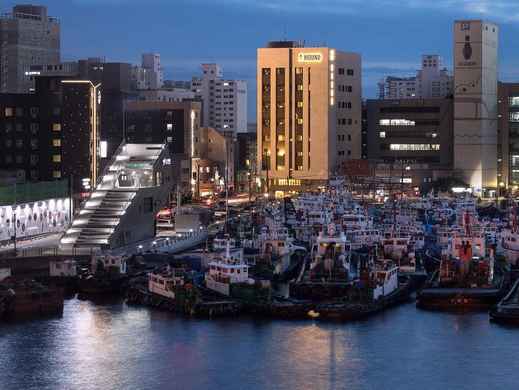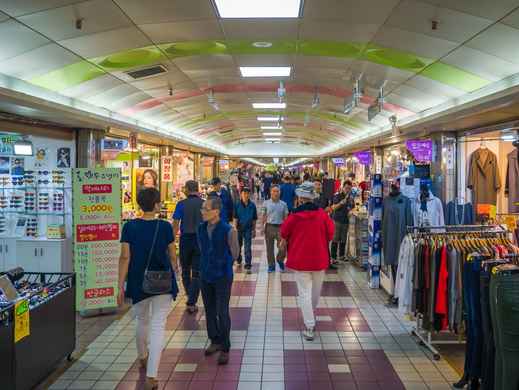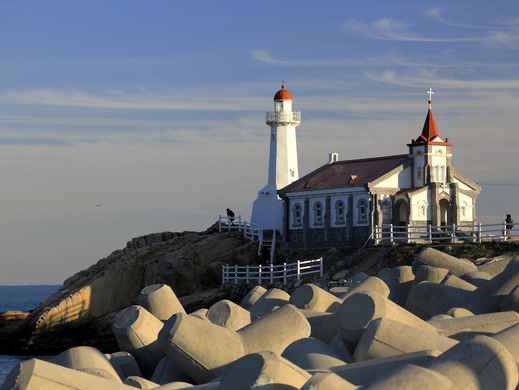


Saha
Asia
/
South Korea
/
Saha
Nestled on the southern tip of the Korean Peninsula, Saha-gu is a coastal district of Busan, South Korea's second-largest city. The climate here follows four distinct seasons, with warm, humid summers reaching 30°C (86°F) and relatively mild winters rarely dropping below freezing. Spring brings cherry blossoms while autumn paints the surrounding mountains with vibrant reds and golds—making these shoulder seasons particularly magical for visitors.
Saha embodies the fascinating blend of traditional Korean values and rapid modernization that characterizes much of contemporary South Korea. Unlike Seoul's frenetic pace, Saha offers a more relaxed coastal vibe where locals balance work ethic with quality of life. Residents are known for their warmth and Busan's distinctive dialect, slightly different from standard Korean, adds local color to interactions.
What makes Saha truly special is its striking geography—where mountains meet the sea in dramatic fashion. The district serves as a gateway to some of Busan's most impressive natural wonders while maintaining authentic local culture that hasn't been entirely reshaped by tourism. Here, you can experience a slice of everyday Korean life alongside spectacular landscapes that have earned Busan its nickname as ""Korea's San Francisco.""
Seafood dominates the local cuisine, with fresh catches served at vibrant fish markets where you can select live seafood and have it prepared on the spot. Don't miss dwaeji gukbap (pork soup with rice)—a Busan specialty—or the city's unique take on bibimbap featuring fresh coastal ingredients. Street food in Saha offers affordable delights like eomuk (fish cake skewers) served in warm broth—perfect for cooler evenings by the water.
For unforgettable experiences, head to Dadaepo Beach where the sunset views rival any in Korea, especially during the Dadaepo Sunset Fountain of Dreams shows in summer months. Nearby, Amisan Observatory provides panoramic views of Nakdong River meeting the sea—a breathtaking natural spectacle. For culture enthusiasts, Gamcheon Cultural Village's colorful hillside homes transformed into art spaces offer Instagram-worthy vistas and a glimpse into Busan's artistic renaissance.

Travel Tips for Saha
What you need to know before traveling here
Getting Around Saha
A guide to Saha's local transportation
Saha offers excellent cycling opportunities, especially along the Nakdong River with dedicated bike paths stretching for kilometers. Busan's public bike rental system, ""Dullegil,"" has stations throughout Saha where you can rent bicycles using the dedicated app or a transportation card. Rates are approximately 1,000 won per hour. The terrain can be hilly away from the coast, so check routes before planning longer rides. Helmets aren't provided but are recommended.
Practical Tips for Saha
Things to prepare and best way to visit
While knowing basic Korean phrases is helpful and appreciated, you can navigate Saha with English. Public transportation signage includes English, and many restaurants have picture menus. Younger Koreans often speak some English, especially in tourist areas. Download Papago or Naver Translate apps, which work better for Korean translation than Google Translate.
South Korea boasts some of the world's fastest internet speeds. Free public Wi-Fi is available in most cafés, restaurants, shopping centers, and public spaces. For continuous coverage, consider renting a portable Wi-Fi device at the airport or purchasing a local SIM card, which is relatively inexpensive for short stays.
Tipping is not customary in South Korea and may even cause confusion. Service charges are typically included in restaurant bills, and taxi drivers don't expect tips. The exception is high-end international hotels where staff may be accustomed to receiving tips from foreign guests.
Visit Dadaepo Sunset Fountain of Dreams during evening performances where locals gather. Join early morning tai chi sessions at Dadaepo Beach with elderly residents. Explore Amisan Mountain trails on weekends when Korean families hike together. Check community centers like Saha Cultural Center for traditional craft workshops open to visitors, and don't miss seasonal festivals like the Nakdong River Ecological Festival which showcases local traditions.
When visiting temples, dress modestly covering shoulders and knees. Remove shoes before entering temples' main halls and homes. If invited to someone's home, bringing a small gift like fruit, quality chocolates, or coffee is customary. Avoid sticking chopsticks upright in rice (resembles funeral rituals) and receive items with both hands as a sign of respect.
See All Practical Tips for Saha

Explore Saha
Create your itinerary with our top picks below

Travel Tips for Saha

Explore Saha





































 Facebook
Facebook Instagram
Instagram TikTok
TikTok Youtube
Youtube Telegram
Telegram
